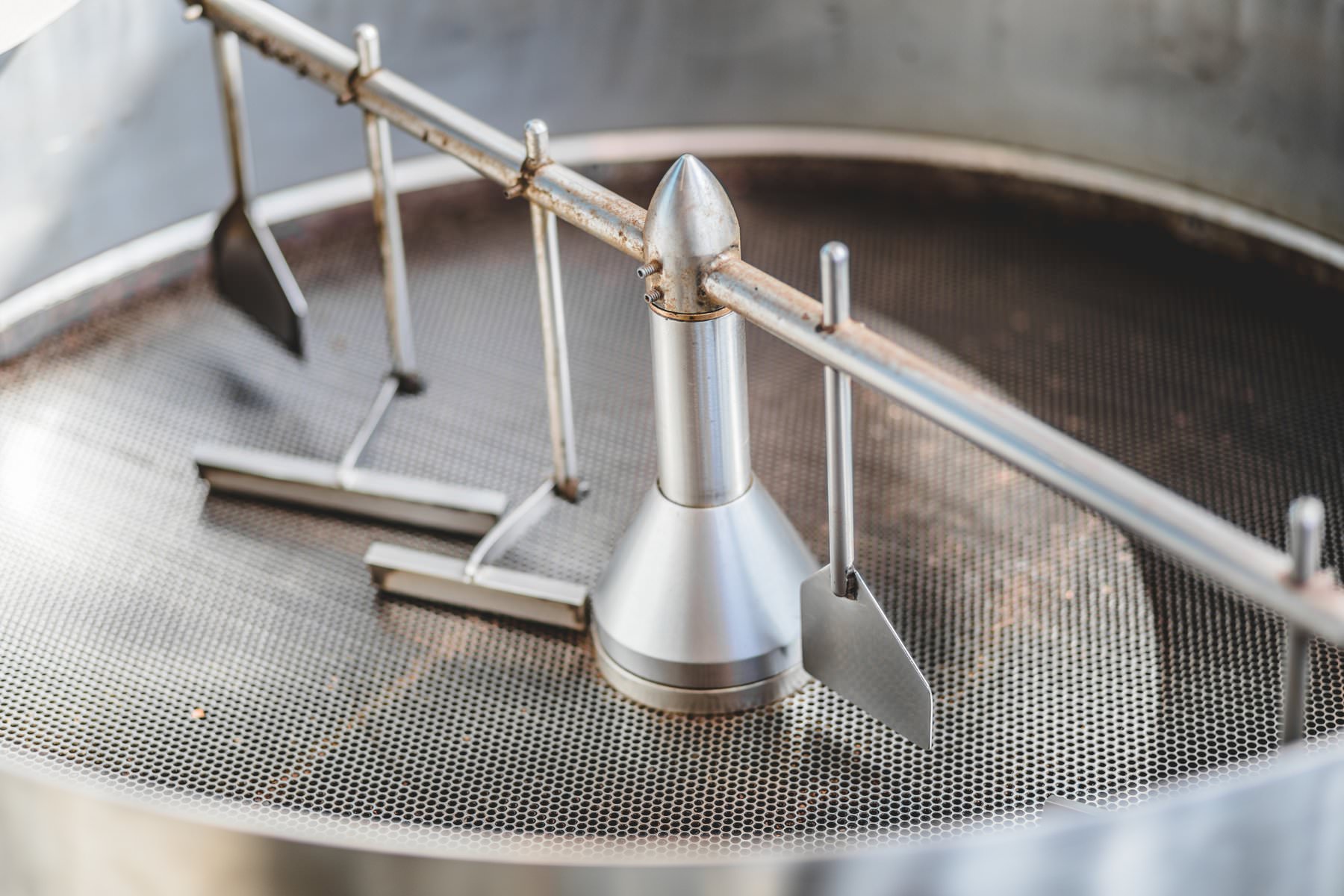A Roaster’s Guide to Preventative Machine Maintenance

| Roast
By Liz Bishop
Running a successful coffee roastery includes more than just selecting the best beans and mastering the art of roasting. The consistency of your roasted product and the efficiency of your operations stand on the foundation called machine maintenance. To avoid machine damage and fires (yes, FIRES), preventative maintenance is essential.
In this guide, we’ll explore key preventative steps that coffee roasters can take to maintain their roastery and optimize their production process. And if you make it to the end, we’ll reward you with the ultimate, ready-to-use maintenance checklist. Pair this expert checklist with Cropster’s Tasks feature, and you’re ready to develop a successful maintenance routine. Let’s dig in!
1. Cleaning and Sanitization
One of the most fundamental aspects of preventative maintenance is keeping your roastery clean. Regularly clean all equipment, including roasters, grinders, large scales, and packaging machines, to prevent the buildup of residue. A dirty environment not only affects the flavor of your coffee but can also lead to equipment malfunctions and decreased efficiency.
- Roaster Cleaning: Develop a schedule for cleaning the roaster’s drum, chaff collector, burners, and exhaust system. Use appropriate brushes and vacuum cleaners to remove built-up chaff and residue. Check and clean the burner, ensuring it operates at peak performance.
2. Regular Equipment Inspection
Add regular and quick inspections of all machinery to identify potential issues before they become major problems. This includes checking for loose bolts, worn-out belts, and any signs of abnormal wear and tear. Regular inspections can prevent unexpected breakdowns and production delays.
- Roaster Inspections: Examine different parts of the roaster – the bearings, motors, and cooling systems. Ensure that all safety features are in working order, and inspect gas lines and connections for leaks.
3. Calibration and Quality Control
Consistency is key when roasting coffee. Regularly calibrate your equipment to maintain the desired roast profiles and ensure quality control. This involves checking thermocouples, airflow, and other parameters to guarantee that each batch meets your standards.
- Roaster Calibration: Regularly check and calibrate temperature probes and timers. Perform sample roasts and cupping sessions to verify that your roasting profiles remain consistent.
4. Ventilation and Air Quality
Adequate ventilation is crucial in a coffee roastery to maintain a healthy working environment. Poor air quality can not only impact the flavors of your coffee but also lead to respiratory issues for roastery workers.
- Exhaust System Maintenance: Clean and inspect the exhaust system regularly to remove accumulated chaff and prevent blockages. Ensure that ventilation fans are functioning properly.
- Air Filtration: Install air filtration systems to reduce dust and particulate matter in the air. This improves the working conditions and prevents contamination of the coffee beans.
5. Record-Keeping and Documentation
Maintain detailed records of all maintenance activities, including cleaning schedules, inspections, and equipment calibration. This documentation serves as a valuable resource for troubleshooting, helps identify patterns of wear and aids in planning future maintenance tasks. Cropster’s Task Management records tasks and automatically reminds teammates when they’re due.
- Maintenance Logs: Create logs for each piece of equipment detailing the date of maintenance, tasks performed, and any issues identified. Use this information to establish a proactive maintenance schedule.
- Training and Knowledge Sharing: Develop a relationship with your machine manufacturer to keep updated on maintenance suggestions. Ensure that your team is well-trained in equipment maintenance procedures. Foster a culture of knowledge-sharing within the roastery to empower employees to identify and address potential issues.
In coffee roasting, preventative maintenance is a non-negotiable. By implementing a proactive plan with regular cleaning, inspections, and record-keeping, you can keep your roastery running smoothly and maximize the return on your machine investments. Remember, a well-maintained roastery not only produces great coffee but also establishes your long-term success in this competitive and dynamically changing industry!
You can create a structured and manageable preventative maintenance plan by breaking down the tasks into daily, weekly, monthly, and annual schedules. This approach ensures that regular maintenance becomes a routine part of your roastery operations.
Sounds like a lot of work? Not with the help of smart tools. You can set up, assign, and monitor all your maintenance tasks with the Tasks feature in your Cropster account! Each scheduled task will show on the Task board as soon as it becomes due, and you can review what has been completed, or missed, via your Task Report. And to make this even easier to start, we’ve created the ultimate maintenance task list for you. Ready to set up your maintenance routine?

